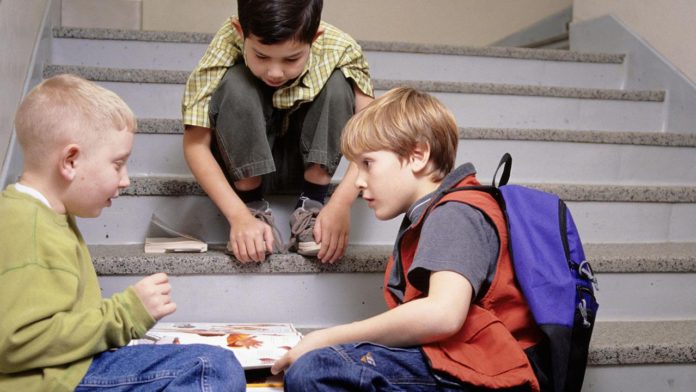
JACKSONVILLE, FLORIDA—The notion of a “gay lisp”—an offensive stereotype to many people—has been a confusing phenomenon for linguists. For decades, popular depictions of gay men have sometimes portrayed them pronouncing the letter “s” as more of a “th” sound—even though studies have failed to find “lispier” speech in gay men than in straight men. Now, however, preliminary data from a small study presented here last week at the biannual Meeting of the Acoustical Society of America (ASA) show that young boys who don’t identify with their assigned gender use “th”-like pronunciation at slightly higher rates than their peers who do, although they seem to grow out of that tendency. The authors speculate that stereotypes of gay adults may be rooted in the speech of boys who go on to identify as gay.
Benjamin Munson, a speech scientist at the University of Minnesota, Twin Cities, who presented the research, has published many studies on how patterns of speech sometimes do correlate with gender and sexual orientation. We learn speech patterns as part of our social identity, and the letter “s,” in particular, is charged with social meaning, Munson says: “You get a lot of mileage out of having a very distinctive ‘s.’” His previous research showed, for example, that even though gay men don’t seem to lisp their “s”s more frequently than straight men, they do produce a slightly crisper “s” sound, with a narrow frequency range and a high peak frequency. (“S” sounds produced by women in that study were crisper still.) To show the contrast, Munson has recorded a sentence in three exaggerated speech styles that contain different “s” pronunciations: the first has an especially crisp “s,” the second a less crisp “s” that is closer to the “sh” sound, and the third a more lisplike “th”-like sound.
Munson wanted to explore how the crisp “s” speech style might emerge in young men. He hypothesized that boys who would eventually identify as gay would, as their speech developed, gradually diverge from their peers in an increasingly crisp pronunciation of “s.” To test the idea, Munson chose a unique population: 5- to 13-year-old boys diagnosed with gender dysphoria. These children feel a distressing mismatch between the gender they experience and the one assigned them at birth, as well as a desire to be another gender, according to the Diagnostic and Statistical Manual of Mental Disorders. They are also statistically more likely to identify as gay in adulthood, Munson explains. “It’s not like every gay adult was a boy with gender dysphoria, nor does every boy with gender dysphoria become a gay adult,” he says, but “this is the best hope we have for looking at the evolution of this [speech] style within an individual.”
The team looked at 34 boys with gender dysphoria recruited from the Center for Addiction and Mental Health in Toronto, Canada, and 34 age-matched boys without gender dysphoria. The researchers asked boys from each group to pronounce a series of words and sentences loaded with “s” sounds, such as “The squirrel sat on the seesaw.” They then analyzed the acoustic properties of the recordings. In a crisper “s,” more energy should be concentrated at higher frequencies, and very little energy at lower ones.
Surprisingly, samples from boys with gender dysphoria didn’t show that feature. Instead, they showed a more even spread of energy across the frequency spectrum—a characteristic of the stereotypical, lispy “th” sound that Munson has failed to find in gay adults. Boys without gender dysphoria didn’t show this speech pattern, and as boys with the condition got older they seemed to lose the lisp. It vanished by age 11.
There are two possible explanations for the findings, Munson says. One is that the lisp is really a feature of gender dysphoria—possibly a product of the genetic and environmental factors that lead to the condition. And because adults have learned to associate the pattern with seemingly less masculine boys, they assume adult gay men do it as well, hence the stereotype.
That suggestion is worth considering, says Paul Reed, sociophoneticist at University of South Carolina, Columbia , who was not involved in the research. “How concrete [the connection] is would need to be researched,” he says, “but it’s definitely plausible.” However, Reed points out that stereotypes can also arise in a more arbitrary way—when a listener makes a random guess about a speech style they perceive as vaguely different.
The other possibility, says Munson, is that parents of kids with the lispy “th” were more likely to bring them to the mental health center, which would have biased his study. If that’s the case, he says, no firm conclusions about learned speech patterns can be drawn from the work.
In upcoming research, he plans to study how children interpret the social meaning of “s” sounds and whether, like adults, they perceive these sounds as more feminine, or adopt them because they carry other subtle meanings, such as a sense of precision or high level of education. “Which of those meanings the kids would be hooking up on,” he says, “I don’t know.”








